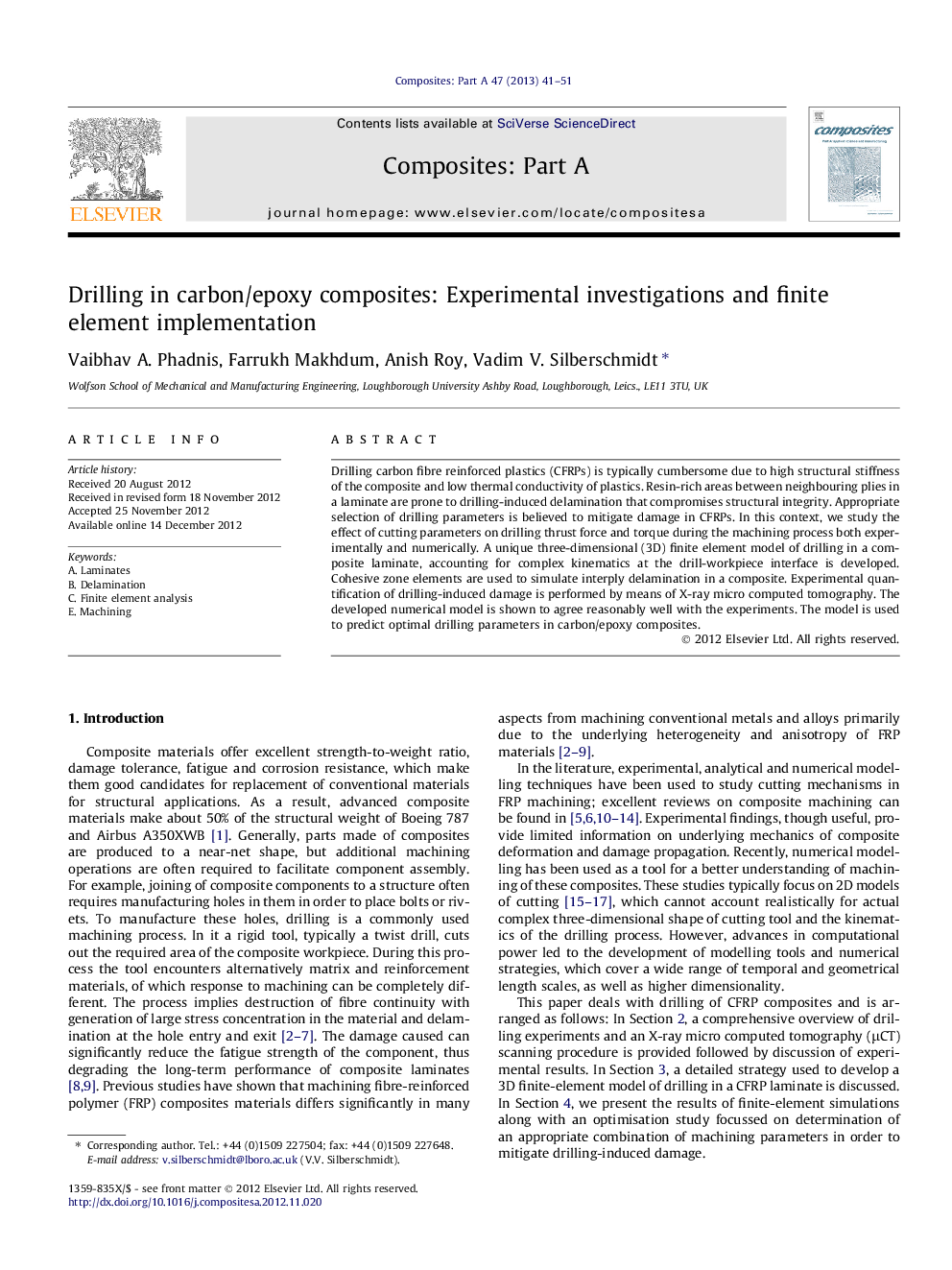| Article ID | Journal | Published Year | Pages | File Type |
|---|---|---|---|---|
| 1466415 | Composites Part A: Applied Science and Manufacturing | 2013 | 11 Pages |
Drilling carbon fibre reinforced plastics (CFRPs) is typically cumbersome due to high structural stiffness of the composite and low thermal conductivity of plastics. Resin-rich areas between neighbouring plies in a laminate are prone to drilling-induced delamination that compromises structural integrity. Appropriate selection of drilling parameters is believed to mitigate damage in CFRPs. In this context, we study the effect of cutting parameters on drilling thrust force and torque during the machining process both experimentally and numerically. A unique three-dimensional (3D) finite element model of drilling in a composite laminate, accounting for complex kinematics at the drill-workpiece interface is developed. Cohesive zone elements are used to simulate interply delamination in a composite. Experimental quantification of drilling-induced damage is performed by means of X-ray micro computed tomography. The developed numerical model is shown to agree reasonably well with the experiments. The model is used to predict optimal drilling parameters in carbon/epoxy composites.
